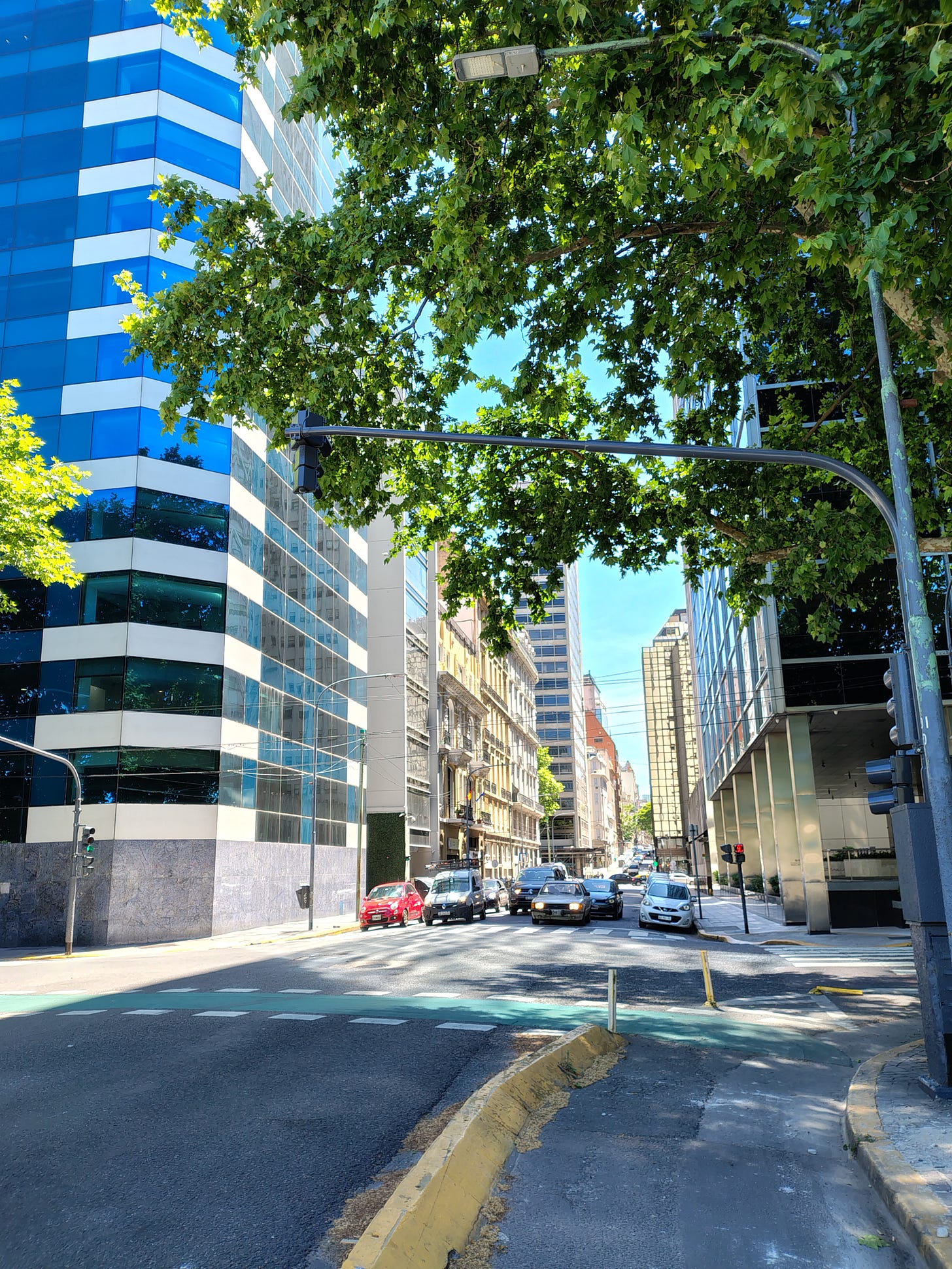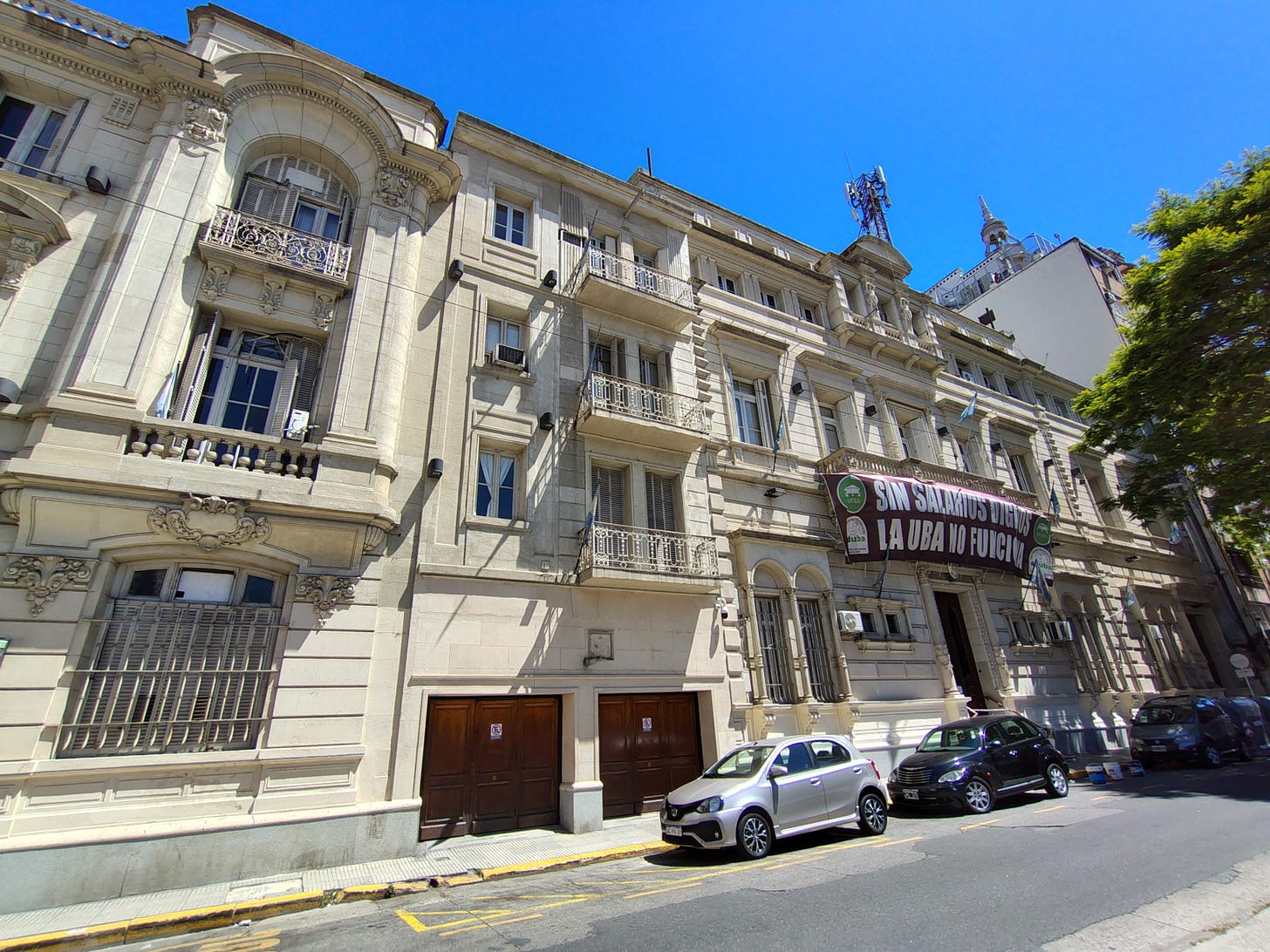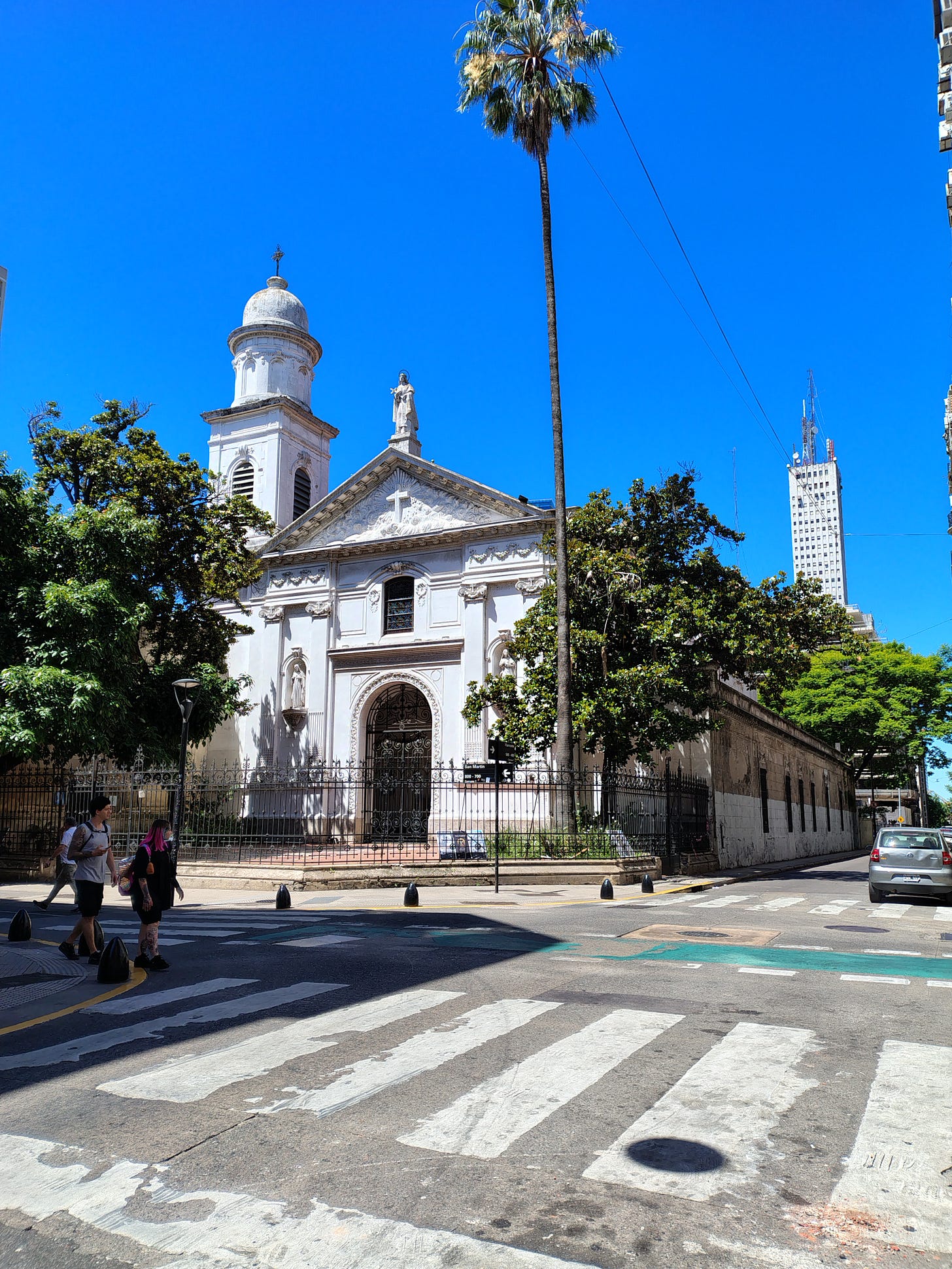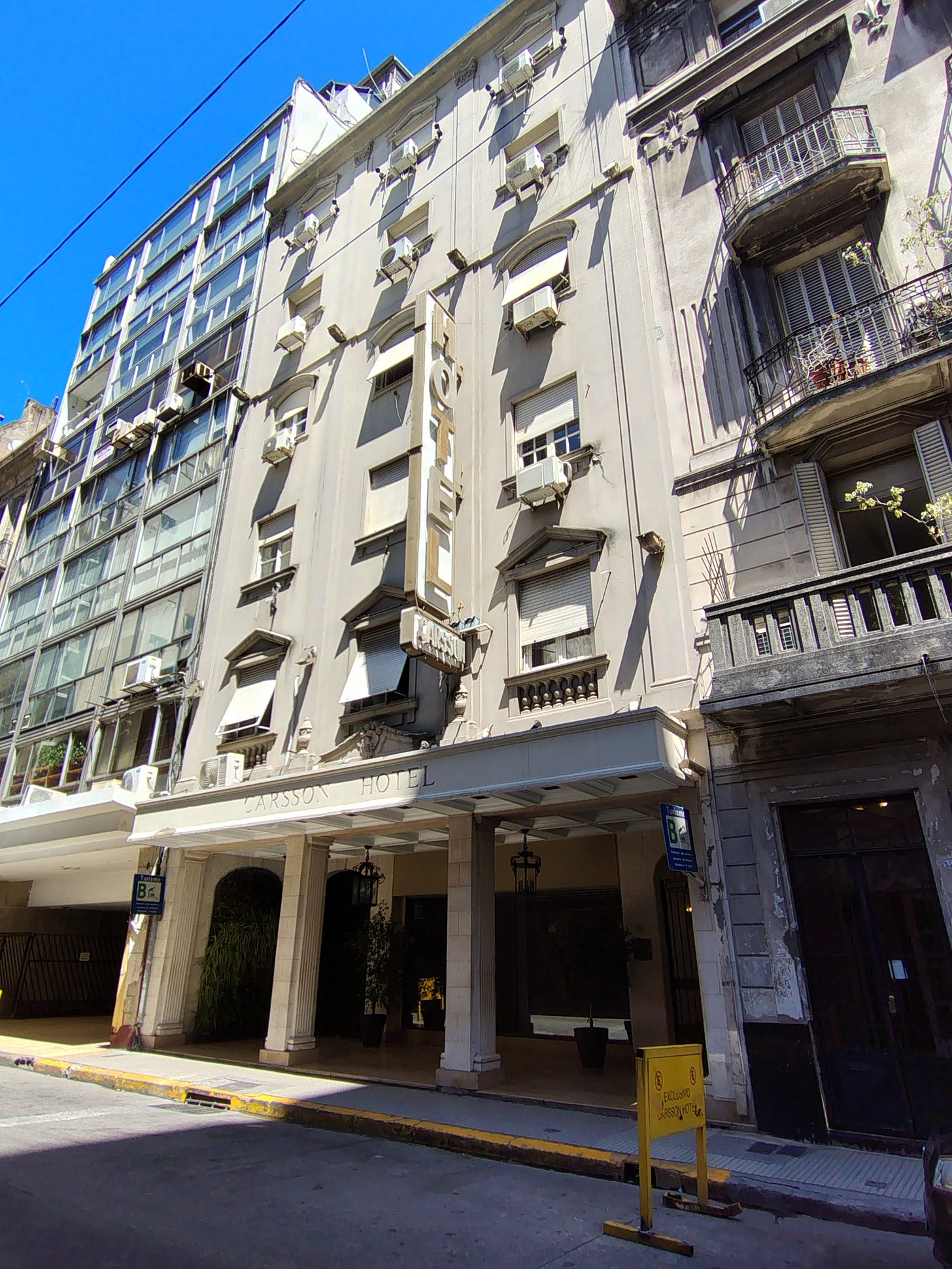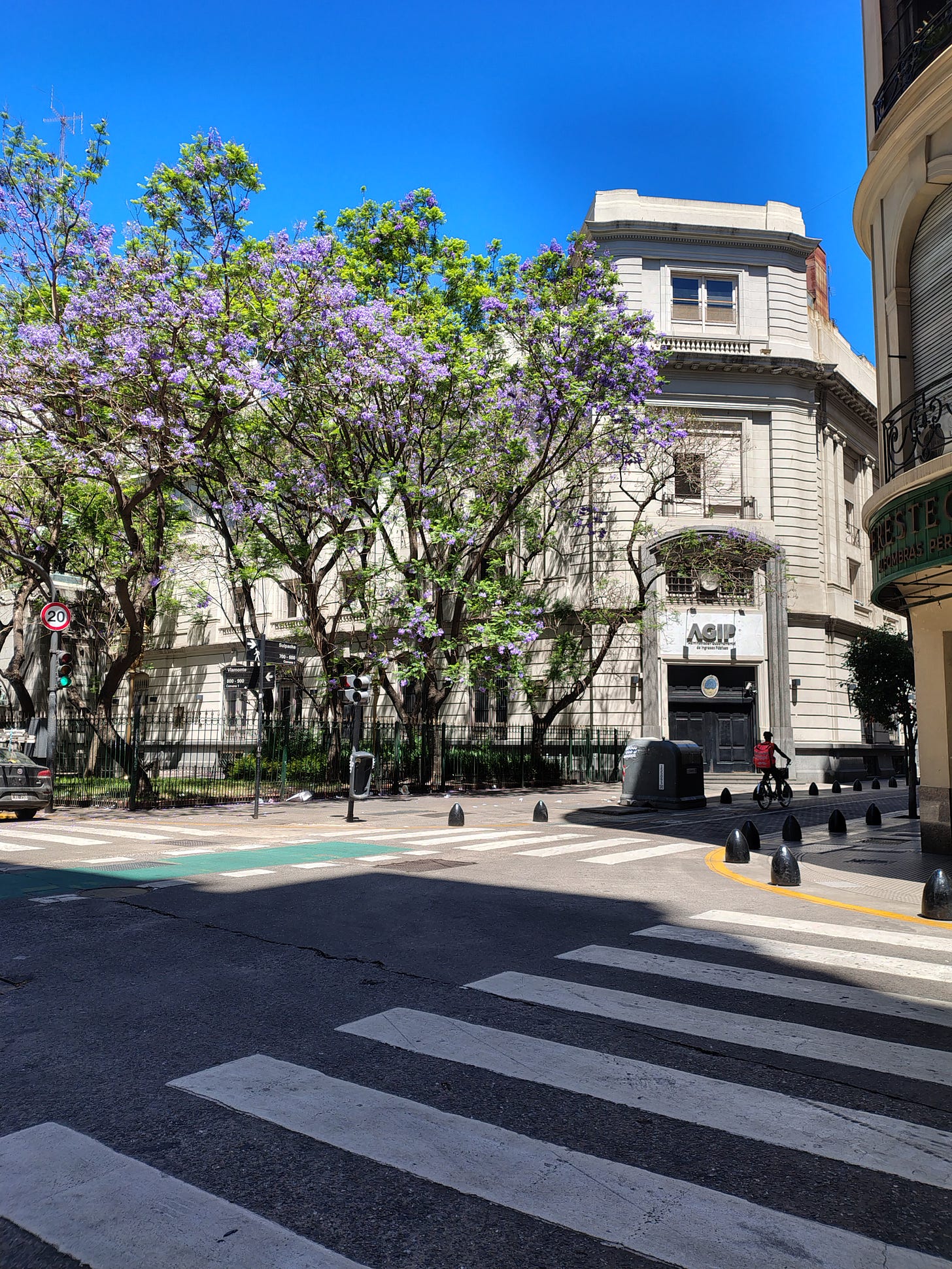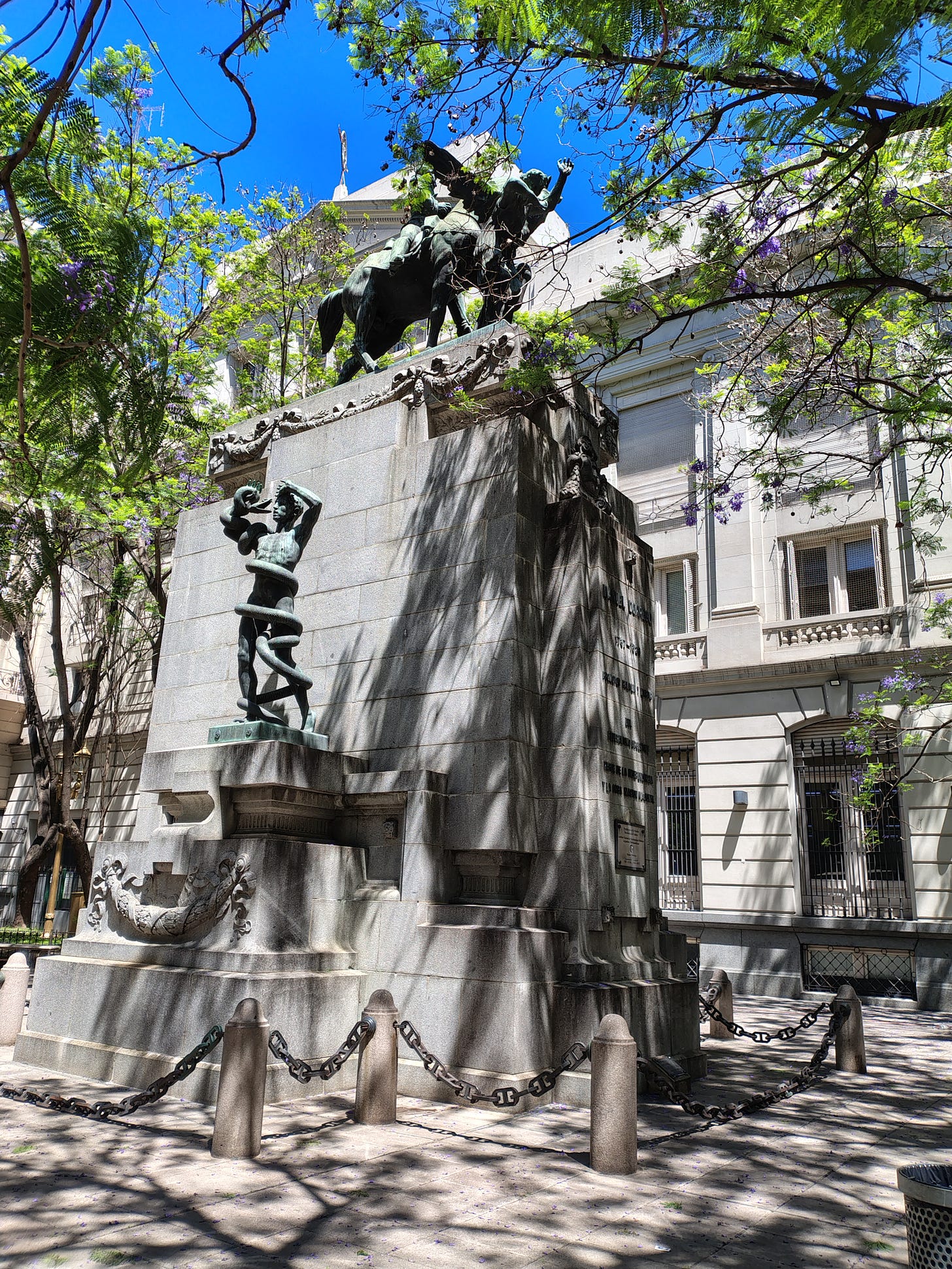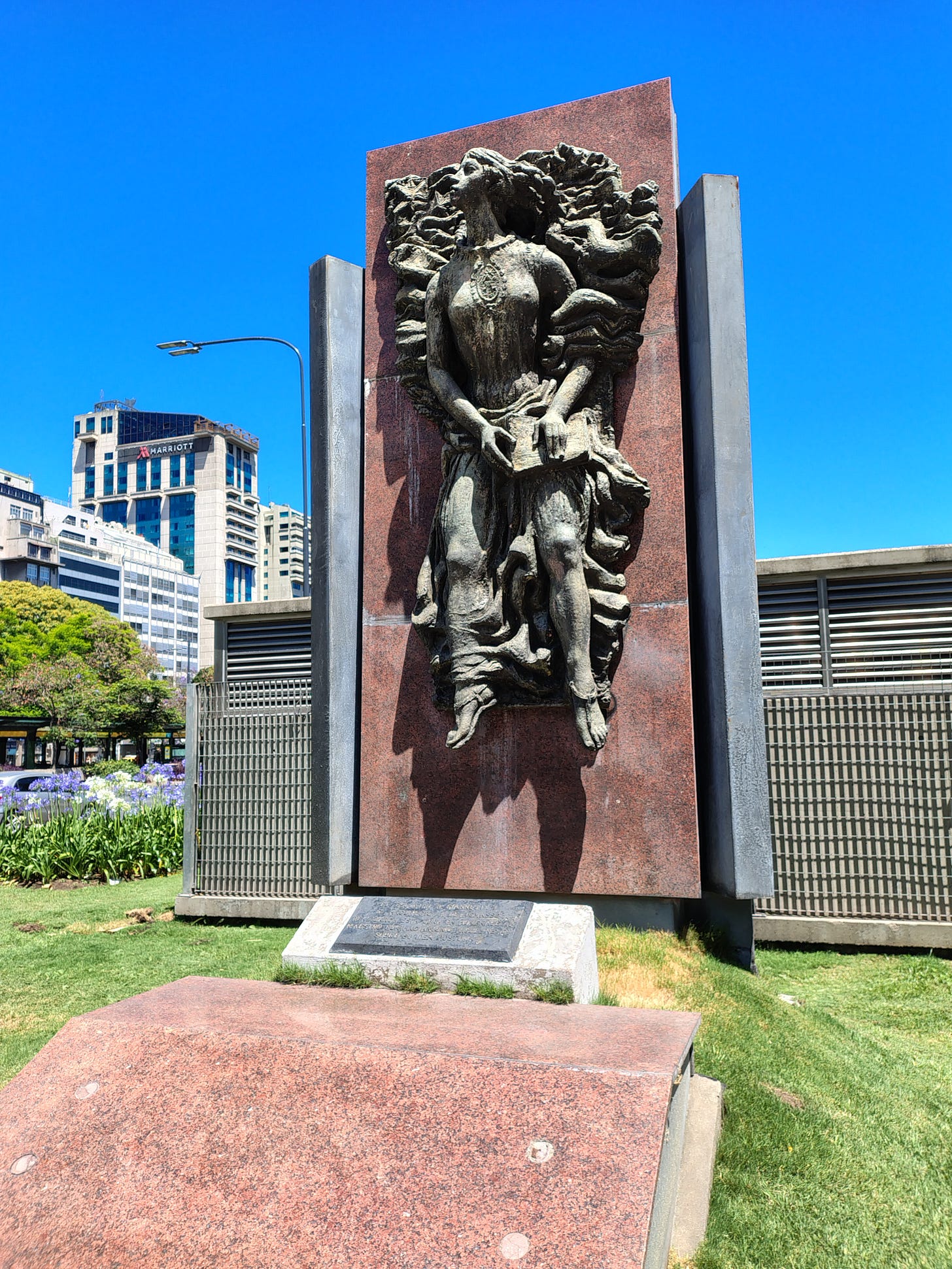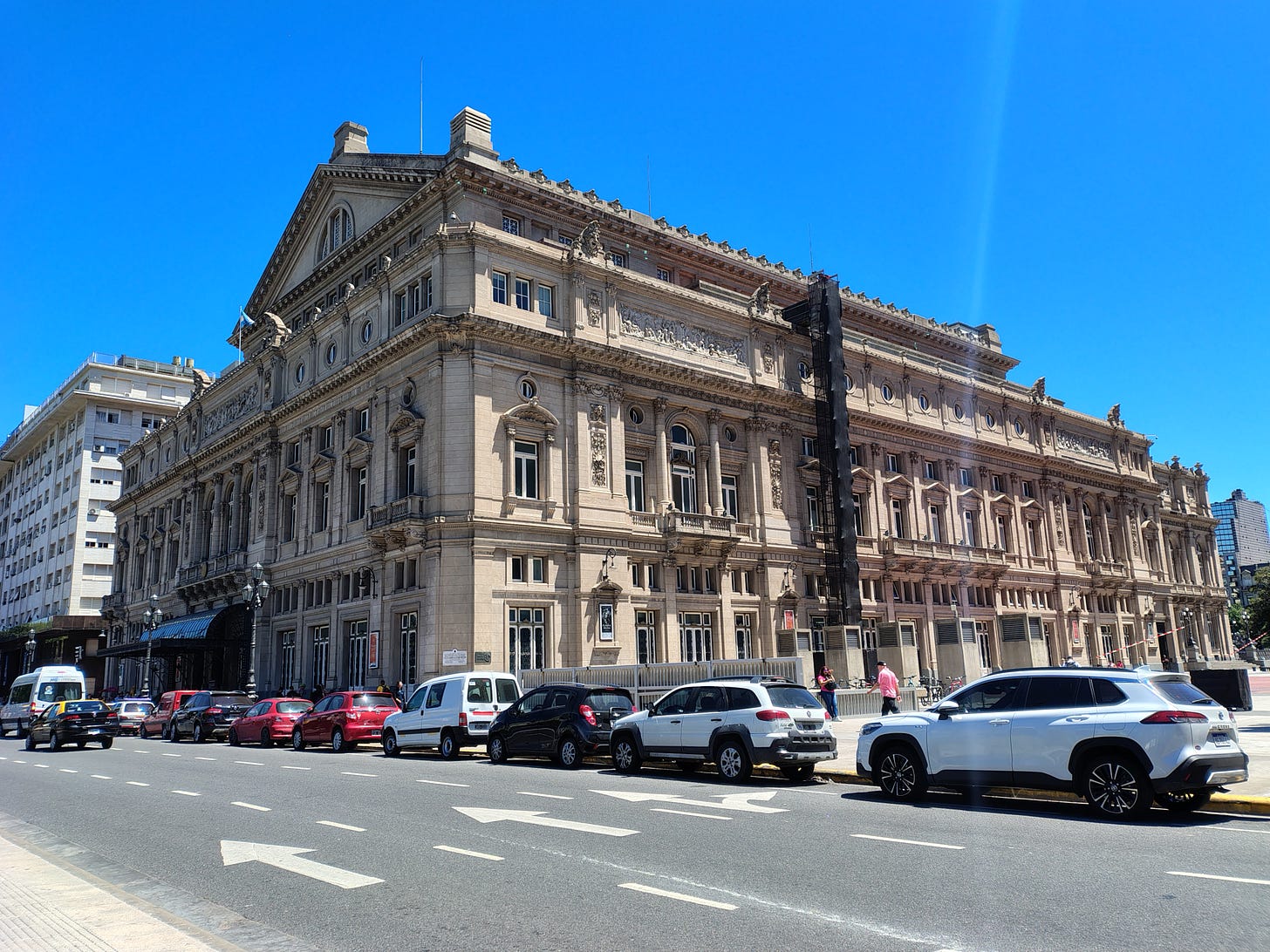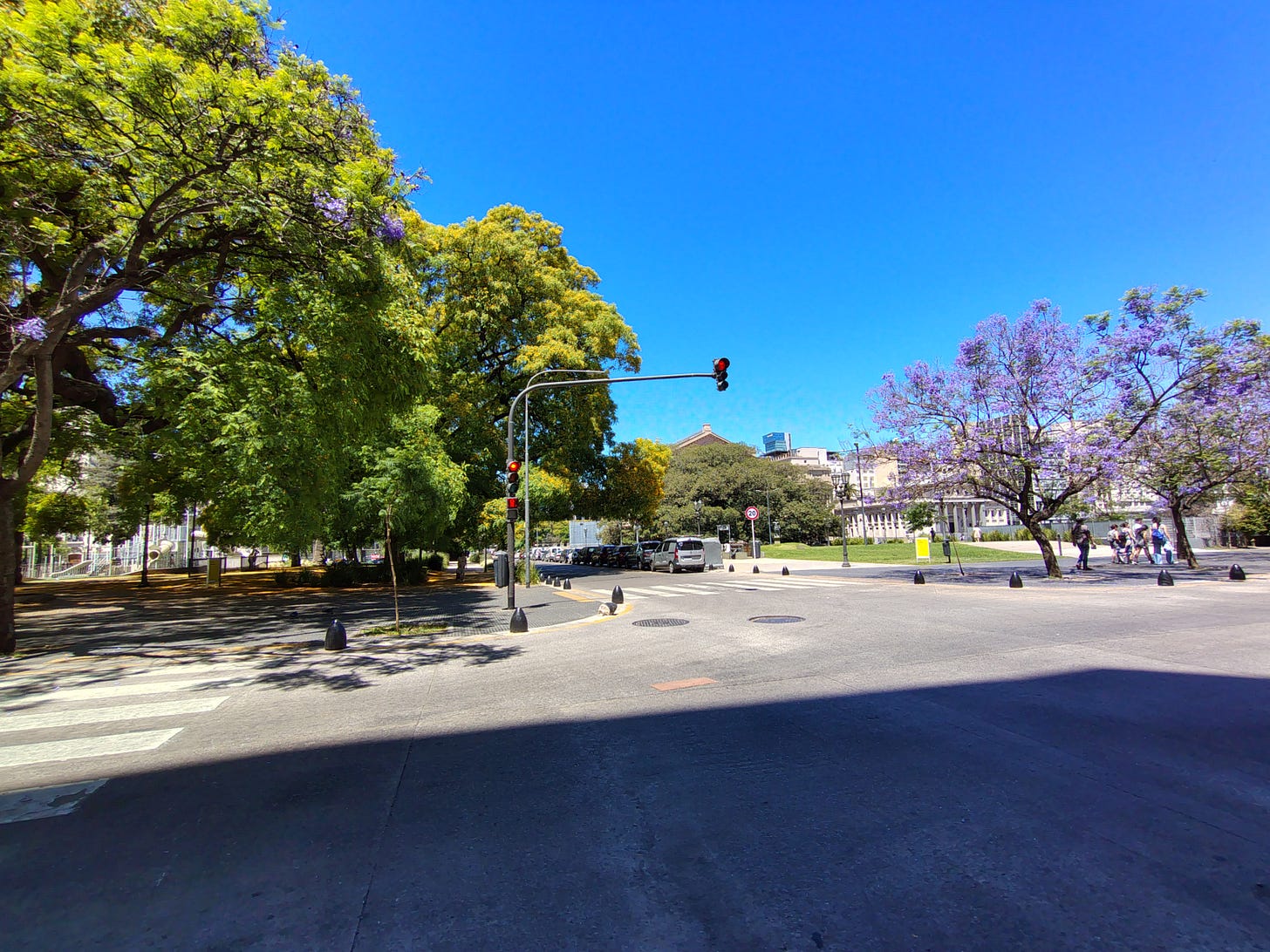Viamonte #1
In which I return to a past project.
Early on in my time in Buenos Aires, I spent a lot of time wandering the city, getting to know the different barrios. At the same time, I got in a fair amount of reading about the country’s history and leaders. One of my pet projects that long ago went by the wayside, was reading a biography of each of the country’s past presidents, followed by exploring a part of the city that related to them in some way - mostly walks along streets or avenues that were named after them. That began back in 2008, and I made it through only eleven of the many over a five year period. So it’s been eleven years since my last venture. My doctor says I need to get out and walk more, so, one way that occurred to me, is to resume this exploration. On to prez #12.
Juan José Viamonte González was born on February 9, 1774, in Buenos Aires, Argentina. He was the son of Lieutenant Jaime José Viamonte y Mulardos, a native of Mataró, Catalonia, and Barbara Xaviera González Cabezas. Viamonte received a good education, studying at the Colegio Real de San Carlos. Following in his father's footsteps, Viamonte began his military career at the young age of twelve. He married Bernardina Ramona Chavarría in 1800, and together they had several children. Viamonte's early military career in the Spanish colonial army included fighting in the British Invasions of the Río de la Plata in 1806 and 1807, where he distinguished himself and earned a promotion to captain.
Viamonte was a prominent figure in the early years of Argentine independence. He played a key role in the May 1810 Revolution, which overthrew Spanish colonial rule. He later served as a general in the Argentine Army, fighting in several important battles during the War of Independence. Viamonte was also involved in Argentine politics, serving as Governor of Buenos Aires Province twice, first in 1829 as an interim appointment when Juan Lavalle’s Unitarian government (which Viamonte had initially supported, but later switched parties to the Federalists) failed until Juan Manuel de Rosas was appointed, and again in 1833 when Juan Balcarce was deposed, serving temporarily until Rosas forced him to step down the next year. Viamonte was a member of the Federalist Party and played a significant role in the political landscape of early 19th-century Argentina.
Two of Viamonte's most important accomplishments were his role in the May Revolution and his military leadership during the War of Independence. His participation in the May Revolution helped to spark the Argentine independence movement, and his military victories contributed to the eventual defeat of the Spanish forces. Viamonte passed away on March 31, 1843, in Montevideo, Uruguay, where he had been exiled in 1839.
The street named after him parallels the previous entry, Lavalle, two blocks away, though is about ten blocks shorter. Still, it runs a solid thirty blocks from the north end of Puerto Madero into Once. I had actually walked this once before, probably ten years ago, planning to do an entry that I just never got around to doing. It’s changed some since then, though not significantly.
Standing at the starting point, at the corner of Av. Eduardo Madero.
At #166 we have the Spanish embassy and consulate taking up most of the building. There are also the offices of UNED, the National Distance Learning University.
Easily the tallest building along the walk at #231. I know nothing about this edifice other than that it’s an office building, at Av. Alem.
It’s a couple of blocks on to #430, to find something else of any note, architecturally. This is the rectorate for the University of Buenos Aires. Feels like an odd place to put it, given how far away most of the university’s buildings are located, but then, this is near to many government and financial institutions, so maybe it makes sense on that basis.
At the corner of San Martín is the Claustro Santa Catalina, a Dominican church and monastery, with, appropriately, given the cross street, a prominent, and apparently famous, statue of St. Martín de Porres, one of the first black saints to be canonized if I understand correctly. I’ve wandered through it once, many many years ago, and it’s got a quite beautiful courtyard, a café, and a historical library and art gallery.
In the 500 block we have the backside of the Galerías Pacífico, which is addressed on the opposite side at Av. Córdoba 550. Built in 1889, it was intended as the Buenos Aires outpost of Au Bon Marché, to mimic the stores of the Bon Marché in Paris. While the building got built, it didn’t become that, instead housing the Museo de Bellas Artes until 1940, when that moved to Av. Libertador, as well as the offices for the Buenos Aires railway company. It was then renovated and turned into a combination of shopping mall (less chic than originally intended, but still pretty fancy) below and offices above. It’s a pretty stunning building to wander through, as are its sibling buildings that each take up another block along San Martín. This building also houses the Centro Cultural Borges, a private art gallery that has regularly changing exhibits.
At #650 is the four-star luxury Carsson Hotel. I can’t say that it screams luxury to me, either for its architecture or location. Staying in this part of, more or less, downtown, would not be high on my list.
One of the few remaining Art Deco buildings in the downtown area, #682 was built in 1930, and basically consists of two mirrored halves, each with a separate entrance. I believe it’s a rental apartment building. It used to have a couple of bus shelters out front, but that was moved down the block when the building’s façade was restored a few years back.
Skipping over a couple of less interesting buildings, architecturally, we get to the corner of Suipacha, and the offices of AGIP, the city’s tax authority. Of note, the statue of Manuel Dorrego, mounted. More details on him at the linked page in this series of walks.
Crossing Av. 9 de Julio, we can pause for a moment to admire this sculpture by sulptor Gianetti, and mounted by architect Tomasso paying homage to the master sculptor Antonio Miguel Nevot (1912-1980), from the province of San Luis. Locally famed for his statues, he was also considered one of Argentina’s foremost professors of sculpture.
Finishing the laborious crossing of this extraordinarily wide avenue, we get to the famed Teatro Colón, where opera, the symphony, and ballet take center stage. They have a wonderful tour (which you have to reserve for in advance) of the building and workshops, that, it appears, I’ve never written up. Which seems odd, because I’ve been on it like three times now.
And I’m going to finish up at close to the halfway point in the walk at Plaza Lavalle taking up the 1200 block, which I actually have written up.
Back with the rest soon!


